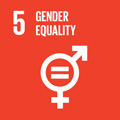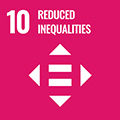- Docente: Daniele Benati
- Credits: 6
- Language: Italian
- Teaching Mode: Traditional lectures
- Campus: Bologna
-
Corso:
First cycle degree programme (L) in
Drama, Art and Music Studies (cod. 5821)
Also valid for First cycle degree programme (L) in Drama, Art and Music Studies (cod. 5821)
-
from Jan 29, 2024 to Feb 28, 2024
Learning outcomes
By the end of the course the student: is aware of how much medieval and early-modern art is crucial to fully understand our present; is exposed to major trends of Medieval and Renaissance art practices; understands the relation between artistic styles and contemporary ideologies and technical skills within the cultural, political and social context.
Course contents
Introduction to the study of medieval and modern art.
The course integrates with the laboratory part held by prof. Irene Graziani, for a total of 12 ECTS.
Readings/Bibliography
Antonio Pinelli, La storia dell'arte. Istruzioni per l'uso, Editori Laterza, Bari 2009.
Teaching methods
Attend classes.
Assessment methods
Students will be assessed by means of an oral examination in which the candidate is required to engage in critical analysis based on the course reading.
Evaluation
Evaluation of the oral examination will follow the usual principle of judging excellence to mean evidence of a solid artistic and historical grounding and of a mature critical awareness.
During the oral examination, students must demonstrate to have acquired a critical understanding of the topics discussed during the course and a critical knowledge of the recommended bibliography.
After completing the course the student will be able:
• To know the features of artwork in early modern period
• Identify and analyze the most significant works
• Develop personal reflections
• Demonstrate a critical understanding of the various issues discussed
• Use correct terminology
The achievement of a comprehensive vision of the issues, the possession of a specific language, the originality of the reflection as well as familiarity with artwork analysis tools will be evaluated with marks of excellence. Knowledge mostly mechanical or mnemonic of matter, a capacity of synthesis and analysis articulated or not, a use of proper language but not always appropriate, as well as a school domain of the arguments of the course will lead to fair valuations. Training gaps or use inappropriate language, as well as a lack of knowledge of the arguments will lead to votes that will amount on the sufficiency threshold. Training gaps, inappropriate language, lack of orientation within the bibliography and inability to analyze will be evaluated negatively.
The assessment procedure is the same for students who attend or do not attend lectures.
Teaching tools
Ppt images, which will be made available to the student at the end of the course.
Office hours
See the website of Daniele Benati
SDGs




This teaching activity contributes to the achievement of the Sustainable Development Goals of the UN 2030 Agenda.
